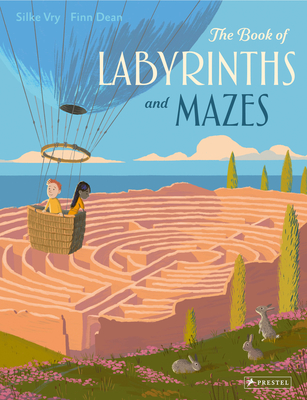
In the book world, the month of November is dedicated to reading and sharing nonfiction books. This month I’ll be sharing some non-fiction books that I think would be great for readers. These books will cover various topics and interests. If you’d like to see previous #NonFicNov posts, click HERE to see more amazing non-fiction books.

THE BOOK OF LABYRINTHS AND MAZES
By: Silke Vry
Illustrated by: Finn Dean
Published: September 14, 2021
Publisher: Prestel Junior
Non-Fiction
A labyrinth is not a maze and a maze is not a labyrinth. You can get lost in a maze, but not in a labyrinth. There are mazes and labyrinths in our everyday lives if we just keep our eyes out for it. A labyrinth could include the complex systems of underground sewers connecting every house, an unfamiliar city with unknown streets full of wrong turns, the journey of a dollar bill that started with you buying a candy bar at the corner market, and the dollar bill ending up in a man’s pocket on an airplane to Spain by the end of the day. Our fingerprints, brain, or even our intestines are like a labyrinth with twisting passages and much to explore.
Straight lines are not natural, especially in life. We can’t expect to go from birth to death without any detours or mistakes. It’s also hard to find straight lines in nature. Not in plants, trees, rivers, or even in our solar system. Straight lines have been invented by humans like skyscrapers. Once kids learn about labyrinths and mazes in their real world, the book moves on to the history of labyrinths. Labyrinths have been part of countries for centuries by the Romans and the Greeks. In England, labyrinths would be in the gardens and lawns next to their churches. Today, Escape Rooms are a popular type of labyrinth.
Kids can learn how to draw their own labyrinth and then once drawn out on paper, can go outside and create one in the snow or sand. There is a big difference between a labyrinth and a maze. Mazes are more about luck and forcing you to make decisions. In a labyrinth, there is only one way to the center.
Kids that are fascinated with puzzles, history, or logic will find the book quite fascinating. I actually learned a lot about the difference between labyrinths and mazes and how you can apply solving them to real life. There are hidden messages throughout the book about the connections to working through a maze or labyrinth and to succeeding in life.
This book is targeted at older elementary-aged to middle-grade kids. There is a lot of information to take in but written for kids to understand, it will push kids to think more outside the box. Mind Trip boxes offer tips on becoming a better person through the experience of learning about labyrinths and mazes. Kids will now be able to see a pinecone, a spider web, or the river near your home in a much different way after reading this book.
Silke Vry, an archaeologist and art historian, is the author of numerous books for children, including Trick of the Eye: Art and Illusion and Colors in Art: Red, Yellow, Blue (both Prestel).
To purchase a copy of THE BOOK OF LABYRINTHS AND MAZES, click the photo below:

Other posts you might like:
Thanks to the publisher for sending a copy of this book for the purpose of this review. This review is my honest opinion. If you choose to make a purchase through the above links, I may receive a small commission without you having to pay a cent more for your purchase.
Posted Under #NonficNov, Book Review, Children's books, Finn Dean, historical non fiction, middle-grade, non-fiction, Silke Vry
